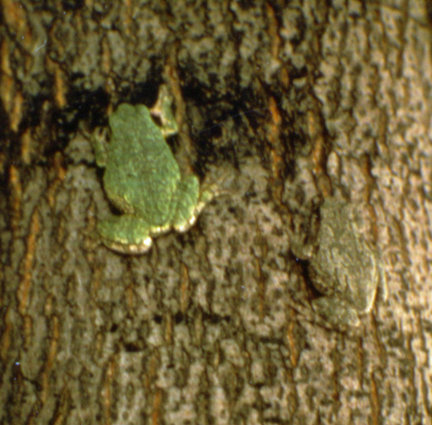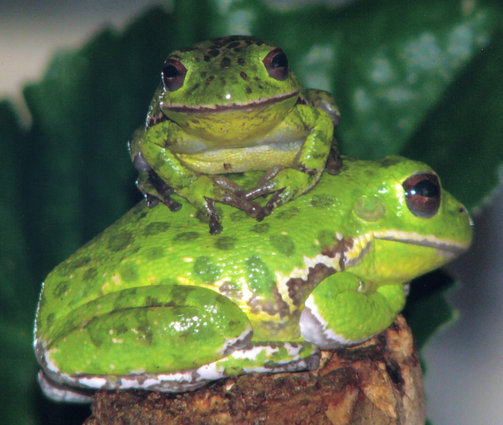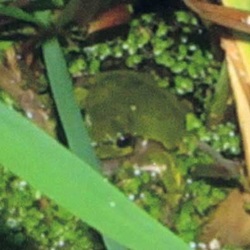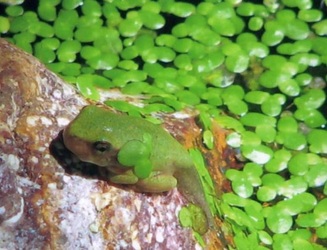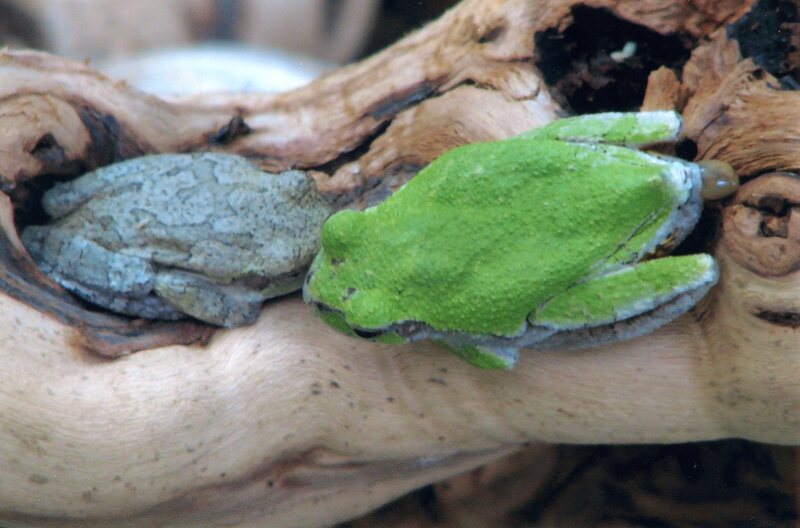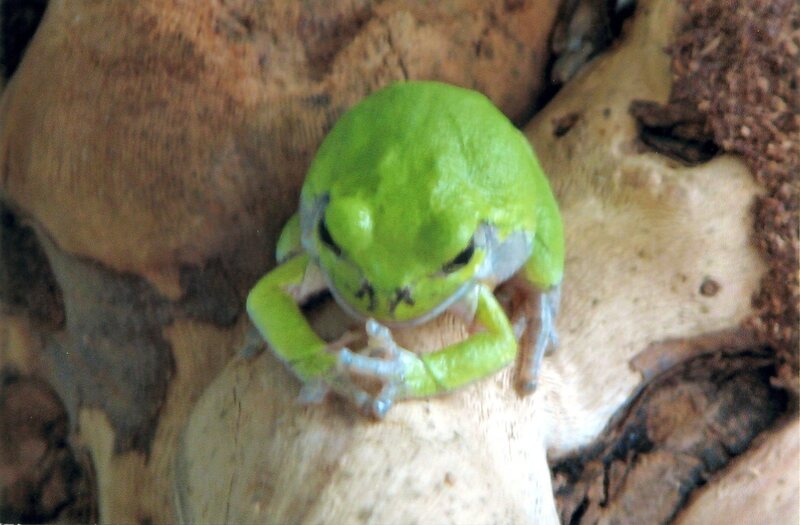Gray Tree FrogCope's Tree FrogBarking Tree FrogLang Elliott, musicofnature.org - Thank you to Lang Elliott for granting permission of use to Sandbox Sanctuary.
Contact Allen E. Anderson 515-981-5568 |
Tree Frog Research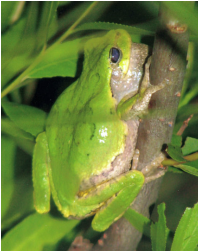
While I have kept some amphibians in the past, my focus was more on lizards, aquatic turtles, and non-venomous snakes. A few years ago, I decided to work with tree frogs of the U.S. I started off with Green Tree Frogs, Barking Tree Frogs, and Cuban Tree Frogs.
My intent is to work up to the more rare and beautiful exotic tree frogs of the world, in a few years. I also got interested in working with our two species of tree frogs, in Iowa: the Gray Tree Frog (Hyla versicolor), and Cope's Gray Tree Frog (Hyla chrysoscelis) in captivity, and the wild. I have numerous goals concerning Iowa's two Tree Frog species:
During the breeding season, they are almost always totally green at night, in the vegetation. In the last photo, I am bent over the plants with a calling Gray Tree Frog. I used my full 12X camera zoom and flash, to take the photo. I also used my full zoom feature on my printer, as well. As you can see, the adult male frog is still relatively hard to see, especially if I had not centered it, in both directions. |
|
©Sandbox Sanctuary 2013-2022
|

